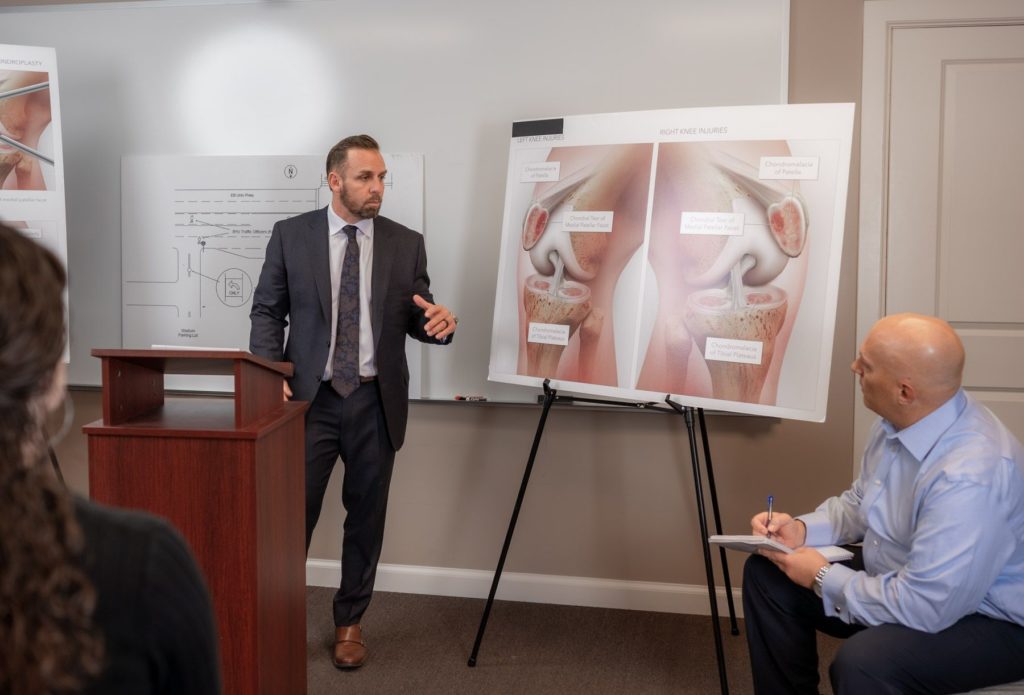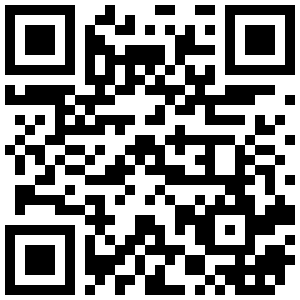2024 Car Accident Legal Guide
A Brief Summary of the Following Article:
|
Many victims suffer significant physical, emotional, and financial losses after a car accident. Fortunately, you may have grounds to file a car accident claim for the damages you have suffered. Understanding the laws and timelines surrounding these cases can be complex, especially as you heal from your injuries. However, knowing your rights is critical to pursuing compensation for your losses.
At Feller, Wendt, we are dedicated to helping our clients understand the ins and outs of their car accident claims. If you have been injured in a motor vehicle accident, here’s everything you need to know about the claims process.
Steps for Filing a Car Accident Claim
Before filing a car accident claim, knowing what to expect at every stage of the legal process is critical. While some claims may be settled in a matter of weeks, others may take several months or more to resolve. The steps for filing a car accident claim are as follows:
Preparing to File
The steps you take immediately after your accident can significantly impact the outcome. Seeking prompt medical attention, preserving evidence, avoiding posting on social media, and retaining the services of a skilled car accident attorney can all significantly improve the odds of achieving a successful outcome.
Filing a Claim Through Insurance
After filing a claim with the insurance company, they will review the details of your case and make a decision based on the evidence you provide. Often, the insurance company will make you a settlement offer. If the offer does not align with your expectations, you can continue negotiating and providing additional evidence. It is essential to note that if you accept an offer from the insurance company, you may forfeit your right to pursue damages through a personal injury lawsuit.
Filing a Personal Injury Lawsuit
If the insurance company denies your claim or fails to offer you a favorable settlement, you may have grounds to file a lawsuit for the full extent of your injuries and other losses. After the lawsuit is filed, the defendant will have 21 days to respond if the case is filed in Utah and 20 days to respond if the case is filed in Utah or Arizona.
The defendant may respond with a motion to dismiss your case. A judge will review the motion and determine whether the case will proceed.
Discovery
When the judge approves the case, the discovery process will begin. During this phase, both legal teams will share and request evidence. The discovery step will help both parties decide if they should try to settle the case or proceed to trial.
Settlement Negotiations
After the discovery phase, both legal teams will negotiate and try to reach a favorable settlement. While most cases settle out of court, your case may proceed to trial if a fair settlement cannot be reached.
Trial
If your case goes to trial, both legal teams will present their evidence to the court, and a final decision will be made by a judge. Depending on the outcome of your case, you may have grounds to appeal the court’s decision.
Damages You May Be Eligible to Collect Through a Car Accident Claim
If another driver’s negligence caused your accident and subsequent injuries, you should not be forced to pay for the resulting damages. Through a car accident claim, you may be able to recover compensation for your medical expenses, lost wages, and emotional losses. A few types of damages you may be eligible to recover include the following:
Current and Expected Medical Expenses
After a car accident, the cost of treatment can create financial challenges for victims and their families. Depending on the severity of your injuries, you may require lengthy hospital stays, new prescriptions, or physical therapy to make a complete recovery.
Lost Wages and Earning Potential
Many car accident victims may be temporarily or permanently unable to return to work. If you cannot perform your job duties and lose out on wages as a result, you may have legal grounds to pursue damages from the liable party for your lost income. If your injuries prevent you from returning to the same line of work entirely, you may be able to claim damages for reduced earning capacity.
Property Damage
Car accidents not only cause life-altering physical and emotional injuries but also extensive vehicle repairs. If your vehicle sustained significant damage due to another driver’s negligent actions, you should not be forced to pay repair or replacement costs.
Pain and Suffering
Car accidents often result in emotional trauma in addition to their physical injuries. While these intangible losses can be challenging to quantify, keeping a pain journal after your accident can help you prove the extent of your losses and how they impact your daily life.
Statute of Limitations for Filing a Car Accident Claim in Utah, Arizona, and Idaho
Following your accident, it is essential to act quickly to pursue justice. All states abide by a strict legal deadline known as the statute of limitations for filing personal injury cases. In Utah, the statute of limitations for filing a claim is four years from the date of the accident. However, in Arizona and Idaho, plaintiffs only have two years to seek damages for their losses.
While two to four years may seem like plenty of time to file your claim, it is in your best interests to act sooner rather than later. Essential evidence can be lost or destroyed over time, and key witnesses may move away or forget important details about your accident. Starting your claim as soon as possible can make it easier to preserve evidence and increase your chances of achieving a favorable outcome.
Evidence in Car Accident Claims
Gathering evidence at the accident site can significantly influence the outcome of your claim. A few pieces of evidence that can bolster your case include the following:
- Photos: Be sure to take photos of the accident scene and any injuries you’ve sustained. These photos can provide visual proof of the accident’s severity and the immediate aftermath.
- Witness Statements and Contact Details: Obtaining testimonies and contact information from witnesses can be critical to your case. Their accounts can offer third-party perspectives on the events leading up to the collision.
- Dashcam Footage: If available, dashcam footage can serve as objective evidence to support your claim, showing the accident as it happened.
- Medical Documentation: It is essential to gather all medical records related to your accident-related injuries. These documents are vital for proving the extent and cost of your injuries.
- Police Report: Police reports often contain the responding officer’s objective perspective on the collision, including any violations of law that may have contributed to the incident.
Additionally, keeping a detailed record of any personal notes or observations about the accident and its impact on your daily life can add further evidence to your case. Documenting your recovery process, any changes in your ability to work or perform daily activities, and how the injuries have affected your quality of life can also help you prove the extent of your damages.
Determining Liability in a Car Accident Claim
When you file a claim against the party responsible for your injuries, it’s not uncommon for them to attempt to refute their liability. To successfully recover compensation for your losses, you must establish the following essential elements:
- Duty of Care: The defendant had a legal obligation to abide by traffic regulations and take reasonable measures to avoid causing harm to themselves and others.
- Breach of Duty: The defendant breached this duty of care by acting negligently. Some examples of negligence include distracted driving and speeding.
- Causation: The claim must establish a direct link between the defendant’s failure to uphold their duty of care and your accident.
- Damages: Lastly, you must prove that the accident directly resulted in your injuries and subsequent financial, physical, and emotional losses.
Evidence is the cornerstone of any accident claim. Building a strong claim supported by evidence can help you establish the other party’s negligence and the damages you suffered as a result.
Possible Liable Parties in Car Accident Cases
When pursuing a car accident claim, it is critical to identify the liable party. Depending on the circumstances of your accident, one or more of the following parties may bear responsibility for your accident and subsequent injuries:
- Other Drivers: Proving another driver’s liability involves demonstrating their failure to adhere to safe driving practices, leading to the collision.
- Vehicle Manufacturers: If a defect in your car or another vehicle involved in the accident contributed to the crash, the manufacturer might be liable. Liability could stem from faulty brakes, airbags, or the failure of other critical components.
- Government Entities: Sometimes, accidents are partly caused by poorly maintained roads, unclear signage, or malfunctioning traffic signals. In these instances, the local or state government responsible for road maintenance could be held accountable for your losses.
- Employers of Drivers: In cases where a driver was working at the time of the accident, their employer could be liable under certain conditions. This typically applies when the employer has not adequately trained the driver or has failed to maintain the vehicle properly.
In some cases, more than one party may be at fault for your accident. It is essential to thoroughly examine the evidence for your case so you can pursue damages from every liable party.
Filing a Claim in a No-Fault State
Utah is one of the country’s 12 no-fault states. In other words, car accident victims in Utah can pursue compensation through their own insurance company regardless of who was at fault for the collision. Your insurance company must cover up to $3,000 in medical expenses after an accident. If your damages exceed $3,000, you may be able to file a personal injury claim for the full scope of your losses.
On the other hand, Idaho and Arizona are fault states. This means accident victims in both states must prove fault to pursue compensation from the other driver’s insurance company. If more than one party is at fault, each will pay damages relative to their percentage of fault.


